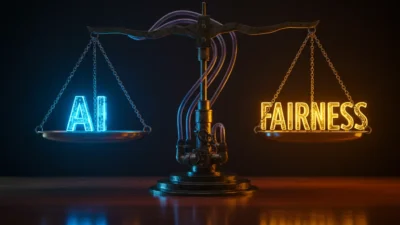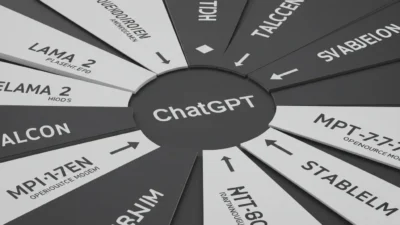Ever wondered how AI actually “thinks”? Discover the surprisingly simple steps behind how AI learns, without needing to be a programmer. This guide breaks down the AI learning process in an easy-to-understand way, perfect for beginners in 2025.
What is AI Learning?
AI learning, also known as machine learning, is the process by which artificial intelligence systems improve their performance on a specific task without explicit programming. Instead of relying on pre-defined rules, AI learns from data. Think of it like teaching a dog a trick – you don’t give it a detailed instruction manual; you show it what to do, reward it for correct behavior, and correct it when it’s wrong. AI learning is similar, but instead of treats, we use algorithms and data.
Beyond Programming: How AI Learns from Data
Traditional programming involves explicitly defining rules for a computer to follow. AI learning, however, is different. It involves feeding an AI system vast amounts of data, allowing it to identify patterns, make predictions, and improve its accuracy over time. Anything from text and pictures to sensor data and financial transactions can be included in this data. The more data the AI is trained on, the better it generally performs.
- Data Collection: The first step in the procedure is to collect pertinent data.
- Data Cleaning: Data cleaning is the process of eliminating mistakes and discrepancies from the data.
- Data Processing: The data is then formatted and prepared for the AI model.
- Training: The AI model is trained on the prepared data, learning to identify patterns and relationships.
- Testing and Evaluation: The model’s performance is tested on new, unseen data to evaluate its accuracy.
- Refinement: Based on the testing results, the model is refined and improved.
The Role of Neural Networks in AI Learning
At the heart of many AI learning systems lie neural networks. These are complex mathematical models inspired by the structure and function of the human brain. They consist of interconnected nodes (neurons) organized in layers, processing information in a parallel and distributed manner.
Simplified Analogy: AI’s “Brain”
Imagine a neural network as a vast network of interconnected light switches. Each switch represents a neuron, and the connections between them represent the strength of the signals passing between them. When data is fed into the network, it activates certain switches, triggering a chain reaction that ultimately produces an output. The network learns by adjusting the strength of these connections based on the feedback it receives. This process, called “training,” allows the network to become better at performing its task over time.
Supervised vs. Unsupervised Learning: A Clear Distinction
There are different ways AI systems can learn, and two prominent approaches are supervised and unsupervised learning.
- Supervised Learning: In supervised learning, the AI model is trained on a labeled dataset. This indicates that the right response has been attached to each data point. For example, in image recognition, each image would be labeled with the object it depicts (e.g., “cat,” “dog,” “car”). The AI learns to associate the input data with the correct output. This is like a teacher providing the answers during a lesson.
- Unsupervised Learning: In unsupervised learning, the AI model is trained on an unlabeled dataset. The AI must identify patterns and structures in the data without any guidance. This is like giving a child a box of toys and letting them explore and categorize them on their own. Examples include clustering similar data points together or discovering hidden relationships between variables.
Real-World Examples of AI Learning Types
- Supervised Learning: Spam filtering (email is labeled as spam or not spam), medical diagnosis (images are labeled with diseases), credit risk assessment (loan applications are labeled as approved or rejected).
- Unsupervised Learning: Customer segmentation (grouping customers with similar purchasing behaviors), anomaly detection (identifying fraudulent transactions), recommendation systems (suggesting products based on user preferences). .
Why Understanding AI Learning Matters in 2025
Understanding the AI learning process is crucial in today’s world. AI is quickly changing a number of sectors, including healthcare, banking, entertainment, and transportation. By understanding how AI learns, we can better appreciate its capabilities, limitations, and potential impact on society. Furthermore, it allows us to critically evaluate AI systems and ensure their responsible development and deployment. This is especially important as AI becomes increasingly integrated into our daily lives.
In conclusion, the AI learning process, while complex in its technical details, boils down to a surprisingly simple concept: learning from data. By understanding the basics of neural networks, supervised and unsupervised learning, we can better grasp the power and potential of this transformative technology. As we move further into 2025 and beyond, this understanding will become increasingly vital.
FAQs About AI Learning Process
- How may AI learning be explained in the simplest terms?
Imagine teaching a dog a trick. You show it what to do, reward correct actions, and correct mistakes. AI learns similarly, from data, adjusting its internal “connections” to improve accuracy.
- Do AI models learn like humans?
No, AI models learn through algorithms and data, not through conscious thought and experience like humans. While inspired by the brain, their learning mechanisms are fundamentally different.
- What is the difference between AI learning and traditional programming?
Traditional programming uses explicit rules, while AI learning uses data to identify patterns and improve performance without explicitly defined rules. It’s the difference between providing instructions and letting the system learn from examples.





